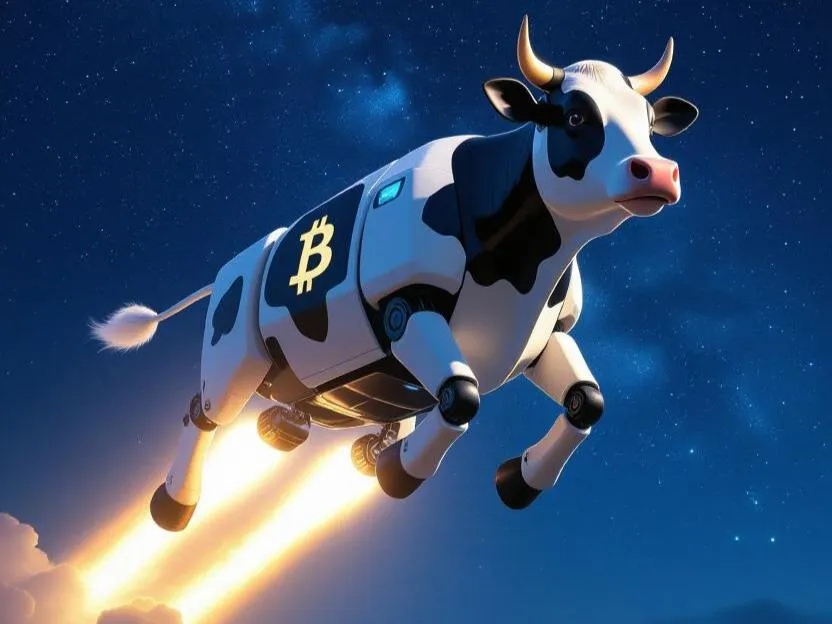
What Cows Teach You About Branding in the Digital Age?
What if the secret to surviving today's digital marketing chaos lies in a practice as old as civilization—burning a mark into a cow's hide? In 2025, as brands grapple with $500 billion in counterfeits and eroding trust, blockchain is emerging as the modern iron, searing authenticity back into branding. But to grasp its power, we must confront a core crisis: what is the true value of a brand? Is it a shiny facade promising the world, or an unyielding tie to reality? With consumer trust at a low 50% per Edelman, and 87% demanding verifiable claims, blockchain's decentralization is not just tech—it's a revival of branding's essence, putting truth at the core where it belongs. Let's trace this evolution from ancient pastures to today's pixels, unpacking failures and triumphs along the way.
Branding's origins aren't in boardrooms but in barnyards. Around 2700 BC, ancient Egyptians seared symbols into cattle hides during roundups, as depicted in tomb paintings, to claim ownership and enable traceability in markets. This practice, echoed in hieroglyphics, wasn't about aesthetics—it was basic proof: a mark binding the referent (the animal's value) to its owner, fostering trust in trade. The Romans refined hot-iron branding for herds, preventing theft and communicating legitimacy. By the 15th century in Europe, "brand" formally meant burning marks on livestock, a term from Old Norse "brenna." In the American West, ranches like Texas' XIT used intricate designs on millions of cattle, preserving value across vast landscapes and signaling quality to buyers. Here, branding embodied truth: a physical, tamper-proof tie to the "stuff" (the asset's inherent worth), ensuring self-reliance in a lawless frontier.
As societies industrialized, branding sophisticated. The 19th century birthed trademarks for goods—Bass & Co's red triangle in 1876 marked UK's first, assuring consistency amid mass production. The 20th century peaked with mass media: Coca-Cola's Santa ads forged emotional bonds, while Nike's "Just Do It" turned sneakers into symbols of grit. Branding became a system of influence through references that shaped desires. Yet, successful ones stayed true: Harley-Davidson's rebel ethos wasn't hype; it mirrored rider culture.
But the 21st century exposed branding's drift from truth. As Baudrillard posited in "Simulacra and Simulation," brands became hyperreal—simulations where signs eclipse reality, promising ideals untethered from delivery. This led to spectacular failures. Jaguar's 2024 rebrand abandoned its heritage for a minimalist, futuristic look, drawing mockery as "soulless" and causing sales dips—fans felt it severed the brand's British luxury roots. Bud Light's 2023 influencer campaign ignited cultural backlash, costing $1 billion as it seemed performative rather than genuine. Pepsi's 2017 Kendall Jenner ad trivialized protests, sparking outrage for insensitivity. Gillette's 2019 "toxic masculinity" spot alienated customers, losing millions by prioritizing preachiness over product truth. Gap's 2010 logo redesign flopped spectacularly, reverting after backlash eroded trust. These missteps highlight branding's lost path: from referent-rooted value to opposite expectations—hollow promises fueling distrust, amplified by counterfeits and scandals like Volkswagen's emissions deceit.
At its core, a brand's true value is fidelity: "worthy of belief and trust, neither false nor derivative." When brands fabricate, they betray this, creating illusions consumers eventually see through. Low-price fakes and AI deepfakes exacerbate this crisis, with 81% of shoppers now needing proof per Morning Consult.
Blockchain flips this script, decentralizing authority to realign branding to truth. Like ancient cattle marks, it binds referent to reality through immutable ledgers, slashing fraud by 30%. In practice, it democratizes trust—authority from consensus, not corporations, echoing conservatism's self-reliance. Nike's .Swoosh NFTs let users resell virtual gear, hitting $1 billion in 2024 by making branding participatory. Starbucks' Odyssey uses blockchain for redeemable rewards, upping retention 20% via verifiable value. Unilever's tokenized palm oil chains verify ethics via QR, lifting trust 45%. In agritech, IBM's Food Trust traces produce, empowering farmers against big ag.
Adoption grows 50% yearly, with blockchain marketing trends like AI-smart contracts personalizing campaigns. A 2025 B2B example: tokenized betas foster genuine engagement.
Challenges: Integration costs and GDPR. But as Jaguar's flop proves, straying from truth is costlier.
Has branding betrayed its roots, and can blockchain redeem it? Would you embrace tokenized authenticity? Comment below—let's decode this renaissance.
